by Martin Quinn
by Martin Quinn
The Alaska-class Battlecruisers were the first of that particular type of warship to serve in the United States Navy. Conceived in the late 1930’s, they were built and commissioned in the later stages of World War II. By then the era of the Battlecruiser and Battleship had come and gone.
Along with Dreadnought, Fisher pushed through the design and construction of the Invincible-class ships. These fast, lightly armored ships carried 12in guns, the same main armament as the Dreadnought. They were some 30 feet longer than Dreadnought – and carried much less armor – factors which allowed them to carry the machinery necessary to propel at the higher speeds needed to fulfill their mission. As Fisher said, “Speed is Armour”.
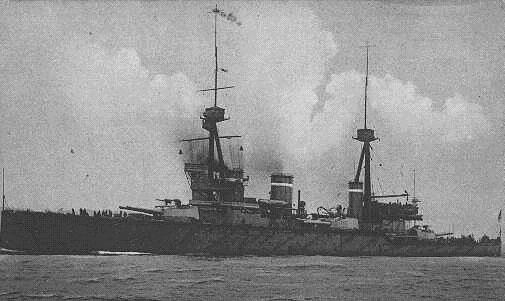
HMS Invincible
Dreadnought made all existing ships of the line – including those of the Royal Navy – obsolete, and kicked of a naval building race that helped contribute to the start of World War I.
Part of that race was the building of more and more
these “super cruisers”, or “Battlecruisers”, as they became known on the
eve of World War I. Britain and Germany jumped into the water
(pardon the pun) with both feet and led the way in the construction of
these vessels.

Indefatigable class HMAS Australia
HMAS Australia was the first flagship of the Royal Australian Navy and the largest warship of that country.
The only member of the planned Admiral-class battlecruisers to be constructed was the Hood. She didn’t enter service til after the war was over, and only then to a modified design, incorporating some of the lessons learned at Jutland.

HMS Lion - The Splendid Cat
Additionally, the Royal Navy built the “light Battlecruisers”
Courageous and Glorious, which were actually built under the guise of light
cruisers. These two ships, which were intended for special
operations in the Baltic, sported only 4 15” guns each. Both were
converted to aircraft carriers in the 20’s. Finally there
was the bizarre Furious, which was designed with two turrets (ala Courageous),
each with a single 18” gun. She ended up being converted to the Royal
Navy’s first aircraft carrier before the end of the war.
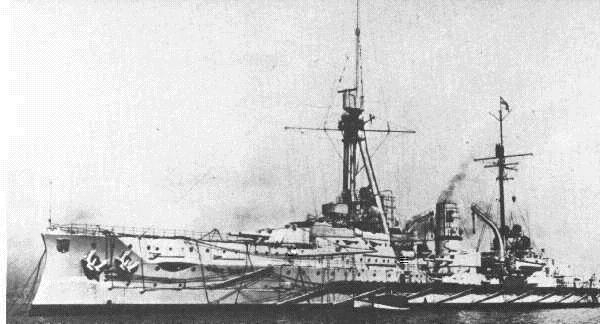
SMS Blucher
That was followed by the single Von der Tann, then the Moltke, Seydlitz and Derfflinger classes of ships. In general, the German ships had slightly smaller guns but were better protected with thicker armor. Some consider these vessels the true ancestors of the fast battleship.
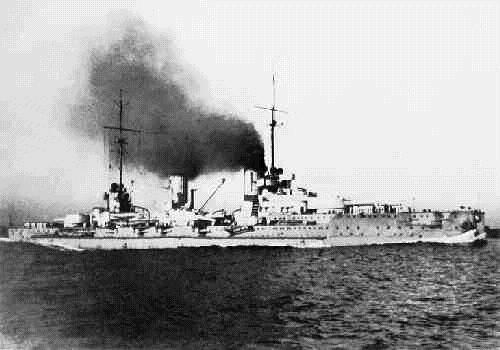
SMS Von Der Tann
The uncompleted Mackensen class would have been over
730 feet long, displaced 30,000 tons and sported 14” guns. The Royal
Navy’s answer to their design and construction was the Admiral Class.
Fortunately for England, while several ships of the Mackensen-class were
were launched, none were ever completed.
In January 1915, during the Battle of Dogger Bank, the Royal Navy’s Battlecruisers tangled with their counterparts from the German High Sea’s fleet. During the running fight, the armored cruiser SMS Blucher was sunk, the battlecruiser SMS Seydliltz was heavily damaged and HMS Lion was mauled as well. While warning bells should have gone off about the fragility of these ships, it did not.
Those unheeded warnings would reap bitter fruit on May 31, 1916, during the Battle of Jutland. The appeal of throwing these magnificent ships with their heavy caliber weapons into the battleline was too much for the admirals on both sides. The results were disastrous.
During the slugging match, Invincible, Indefatigable and Queen Mary all blew up and sank, victims of plunging German shellfire. Lion’s Q turret was destroyed by a direct hit, and only the closing of the flash doors by the quick thinking of the turret captain (who won the Victoria Cross for his actions) saved her from the same fate as her consorts.
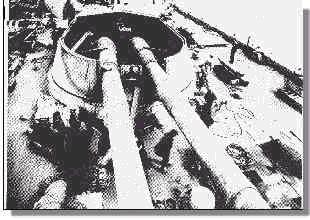
Lion's Q turret after Jutland
On the German side, Lutzow was so heavily damaged that the decision was made to scuttle, while Seydlitz barely made it back to port.
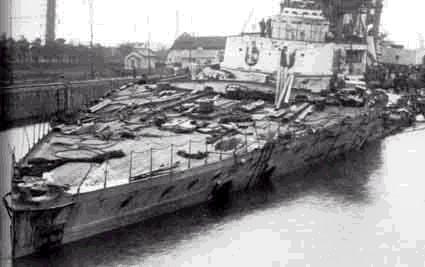
Seydlitz after Jutland
While Jutland was a strategic victory for the British, the battle exposed the Royal Navy’s battlecruisers for what they were – heavy punchers with glass jaws. The German ships were able to absorb much more punishment than their British rivals – more like a fast battleship.
The war ended without any further fleet actions.
With the elimination of the High Seas Fleet as a threat, one might have
thought that the victors would not have needed to build new ships.
Instead, a new naval arms race began, a race that featured even bigger
and faster ships.
